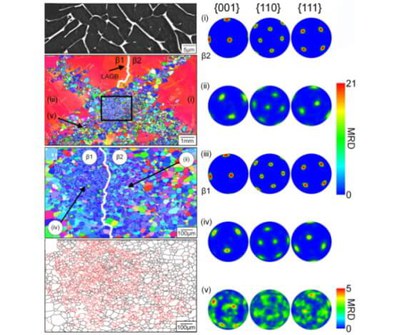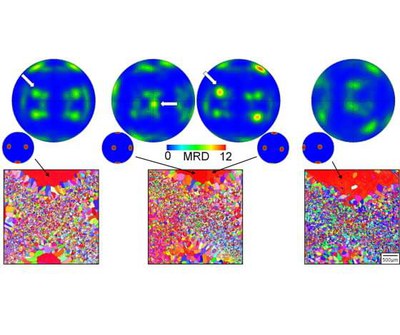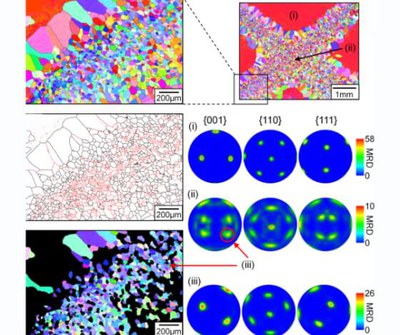


β recrystallization in inter-pass deformed Ti-6Al-4V
The effect of processing parameters on rapid-heating β recrystallization in inter-pass deformed Ti-6Al-4V wire-arc additive manufacturing
Relatively low levels of inter-pass deformation have been found to be very effective in refining the coarse columnar grain structures normally seen in Ti-6Al-4V components, built using wire-fed high-deposition-rate additive manufacturing processes. The most important process parameters that control the level of β recrystallization – the final grain size and micro-texture – were systematically investigated by simulating the deformation and high heating rate conditions in controlled samples, to develop the process knowledge required to optimise inter-pass deformation and obtain predictable grain sizes. Overall, it was found that the level of β-grain refinement achieved by inter-pass deformation was surprisingly insensitive to the ranges of deformation temperatures, deformation speeds, and changes to the as-deposited α + β microstructure, expected within the WAAM process window, provided a minimum plastic strain of only 14% was achieved in each added layer. Conversely, the final component grain size was shown to be strongly affected by rapid grain growth on re-heating above the β transus. The texture results obtained were consistent with previous work which suggested that, with fine AM transformation microstructures, new β-grain orientations may be produced during the α → β transformation from the development of twinning faults, induced by the prior deformation and rapid heating. In contrast, greatly increasing the starting α lamellar spacing – to be more similar to that found in a wrought material – greatly reduced the level of recrystallization and also appeared to change the recrystallization mechanism to favour new β orientations produced largely by local lattice rotation.
A. E. Davis et al., “Mechanical performance and microstructural characterisation of titanium alloy-alloy composites built by wire-arc additive manufacture,” Mater. Sci. Eng. A, 2019, doi: 10.1016/j.msea.2019.138289.
Information
- Research Area:Material Development
- Publication date:01 May 2020
-
Investigators:
Phil Prangnell
, Alec Davis - Publications:https://doi.org/10.1016/j.matchar.2020.110298
